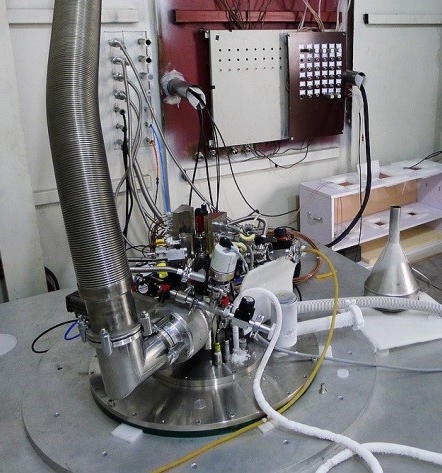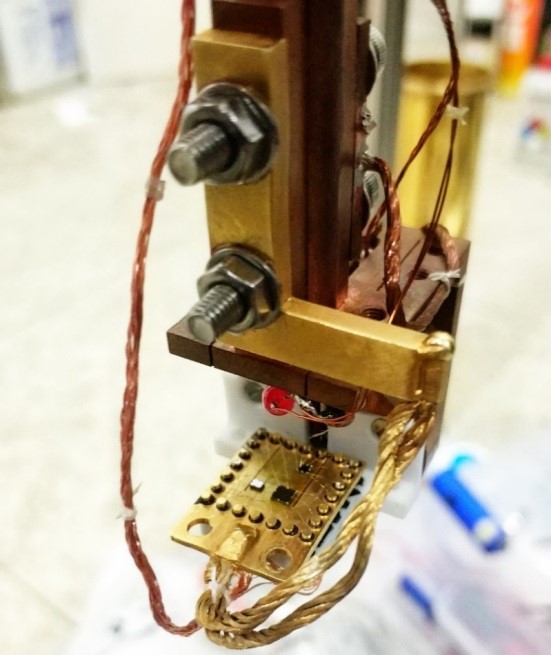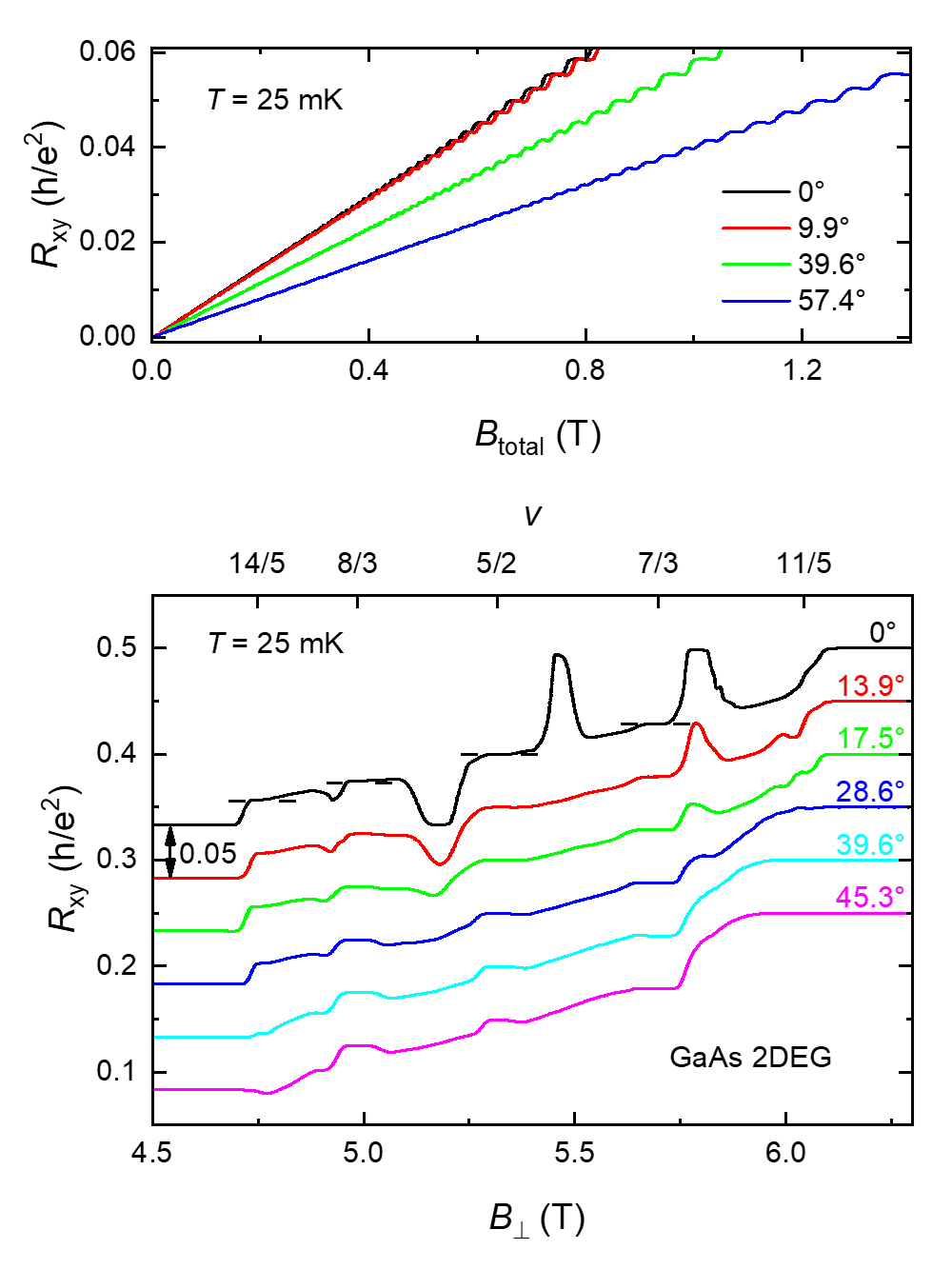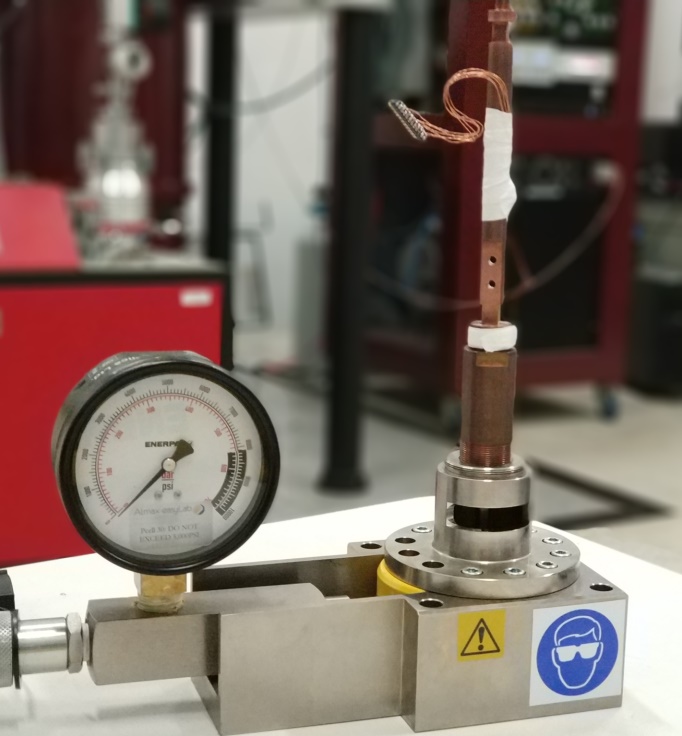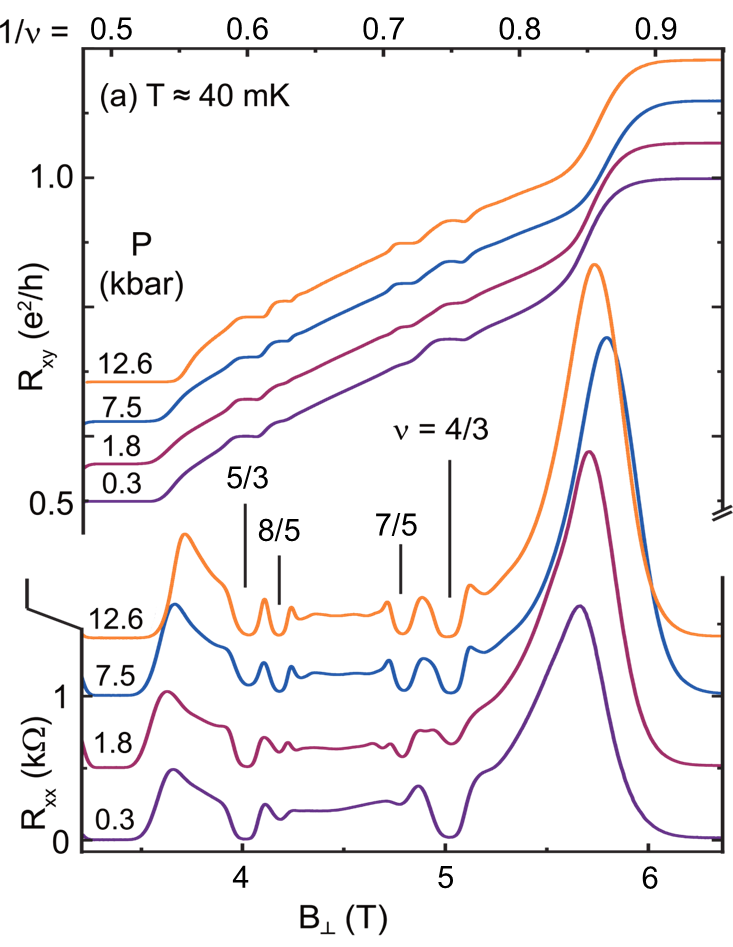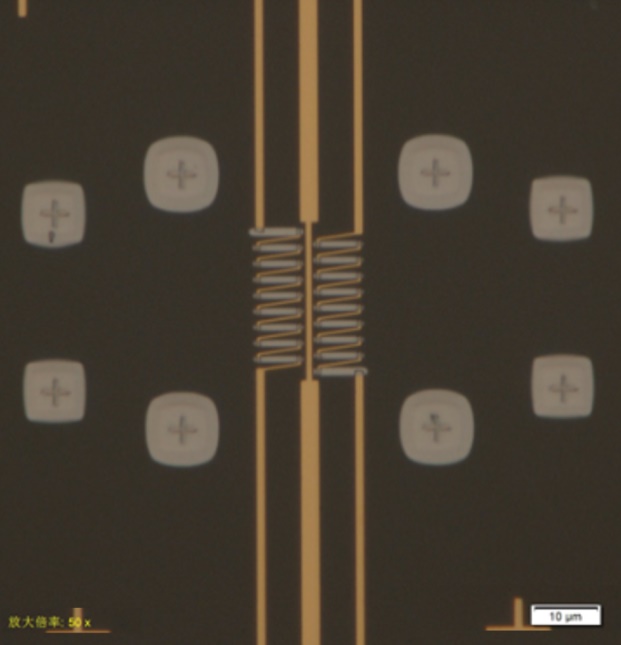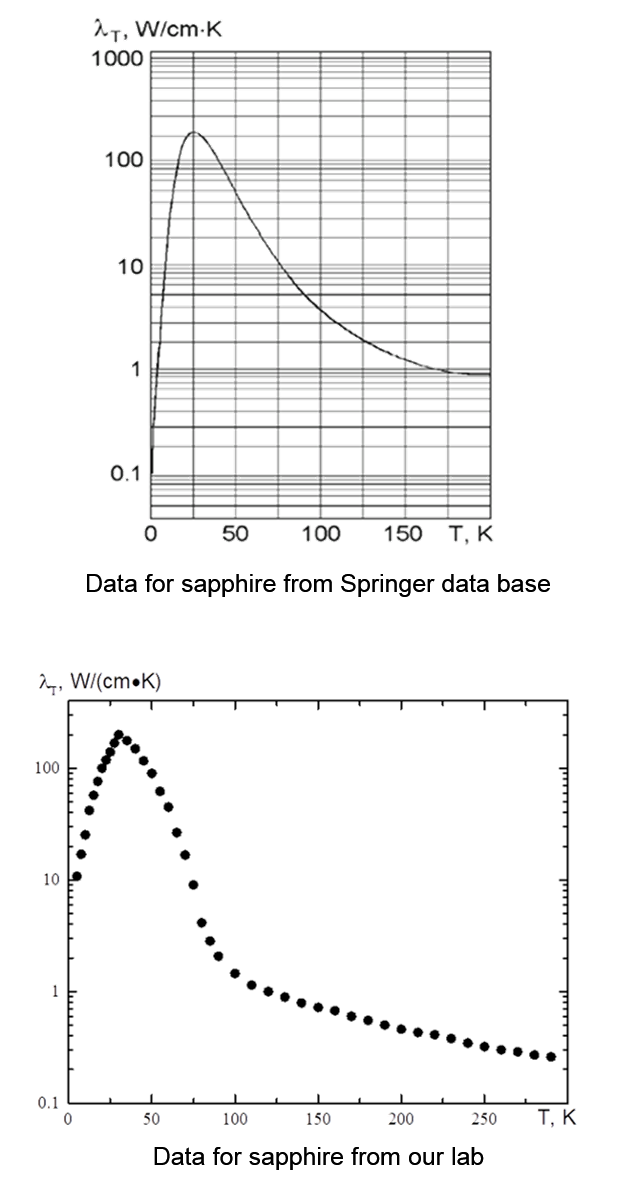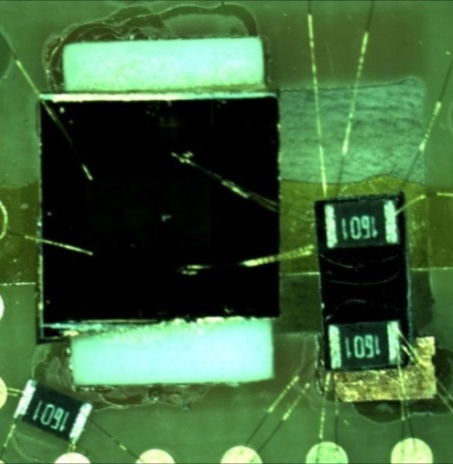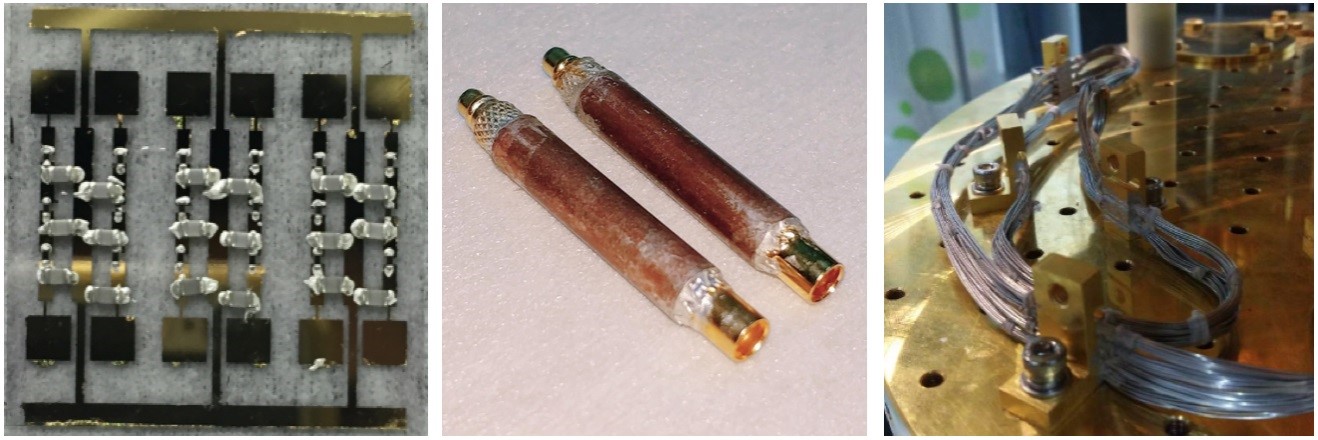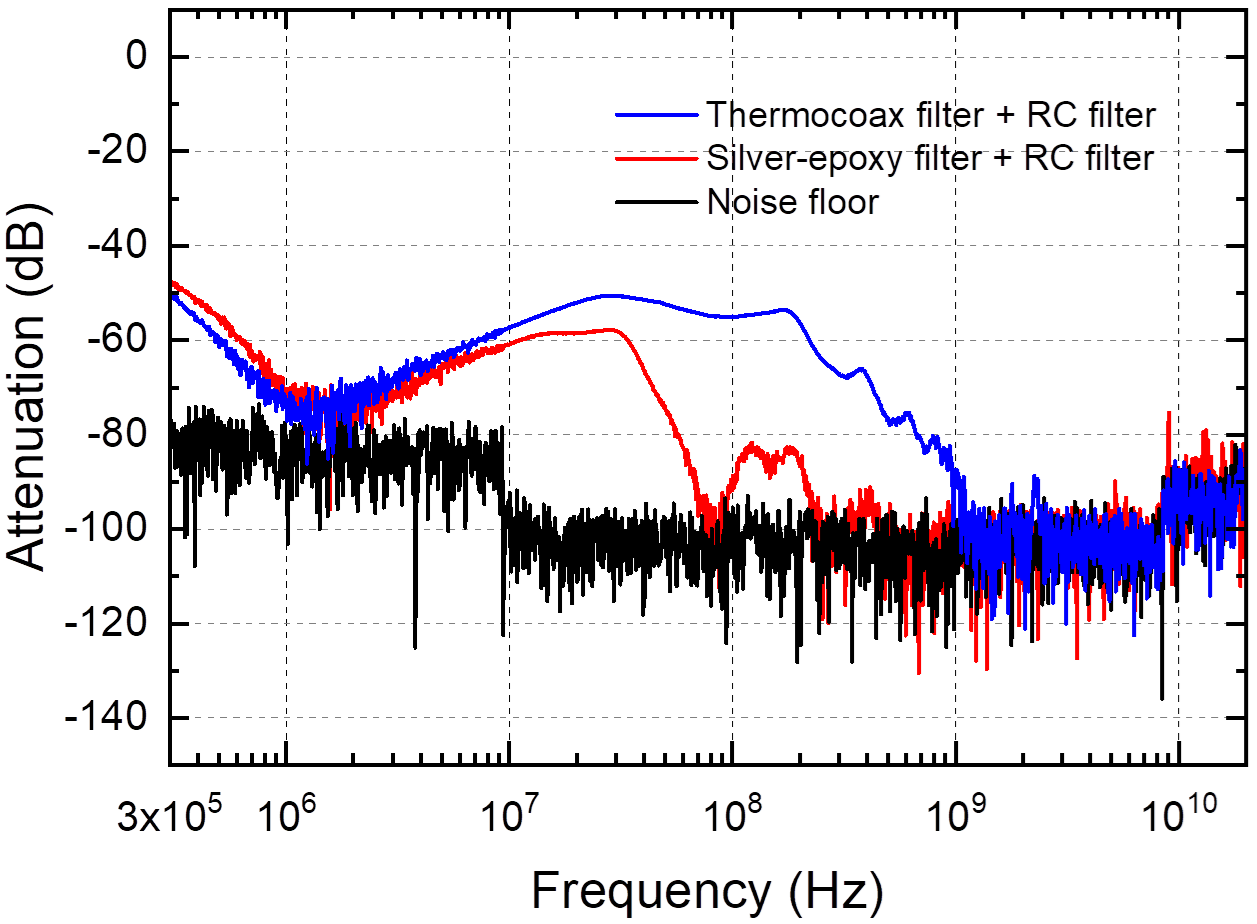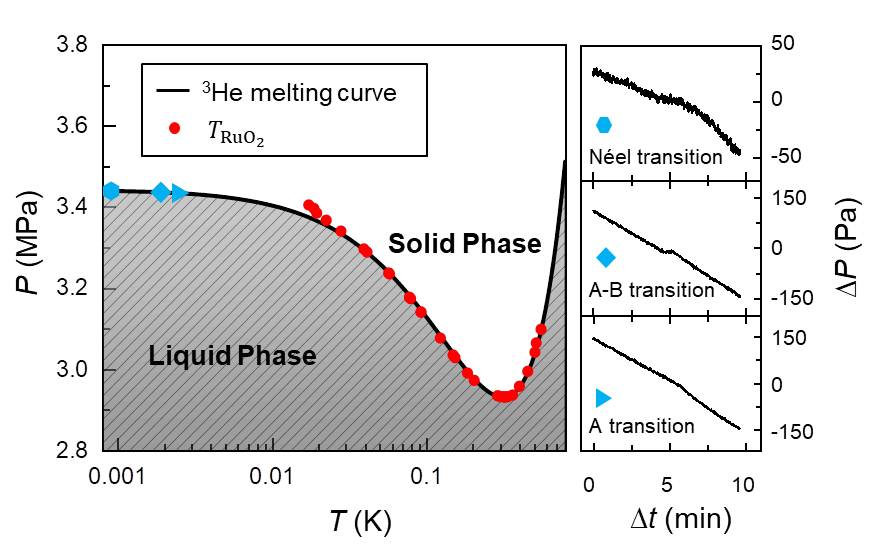Low Temperature Techniques
a. Ultra-low electron temperature measurement environment
Supplier: Leiden Cryogenics B.V.
Model: MNK 126-450
Cooling power: 450μW@120 mK
Refrigerator temperature:<6mK
Electron temperature: 12mK
Dilution refrigerator is a convenient tool to reach ultra-low temperature environment of<10mK , utilizing the 3He-4He phase separation. For electronic transport measurements, electron temperature should be the one to use when comparing to the theories. However, due to the decreasing electron-phonon interaction at ultra-low temperature, the electron temperature is usually higher than the refrigerator temperature typically measured with a resistor thermometer. In a completely untreated refrigerator, we have achieved a<10mK refrigerator temperature and a ~150mk electron temperature.
Filtering is an important method to cool down the electrons through cutting off the electromagnetic interference which is coupled to leads (see Low temperature filtering section). Heat sources including ground loop and vibrations have to be avoided as well. Moreover, the thermal link between sample and cold finger is another factor to affect the electron temperature. We finally achieved a 12mK electron temperature measurement environment and an electron temperature thermometry above 20mK. The lowest refrigerator temperature with all the filters and leads is 6mK.
1. Competing ν= 5/2 fractional quantum Hall states in confined geometry.
2. Quantum Griffiths singularity of superconductor-metal transition in Ga thin films.
3. Observation of a helical Luttinger liquid in InAs/GaSb quantum spin Hall edges.
b. Rotating sample holder
Supplier: Attocube AG
Model: ANR101
Working Principle: Piezo-driven
Angle resolution:< 0.1°
Base temperature: ~ 22 mK
Base electron temperature: ~ 22 mK
In-situ sample rotation: -10° ~ 90°
Rotating sample holder can provide extra degree of freedom under a perpendicular magnetic field. This technique has been widely applied in studies of transport measurements. We have adapted the sample rotation system to a measurement probe of Leiden CF-CS81-600, which could provide a total magnetic field up to 10 T. The sample holder can continuously rotate at 200 mK, with an angle resolution of 0.1°. After the angle is settled, the minimum temperature of the sample holder is the same as the environment temperature. The base temperature to base temperature sample switch time is 10 hours.This system is presented as an application example by Attocube AG .
c. Hydrostatic pressure cell
Supplier: Almax easylab
Model: easycell 30
Maximum pressure: 20 kbar
Base temperature:
Base electron temperature: 40 mK
Hydro/public/static/index pressure provides a method to control the lattice and band structure of materials. This technique has been applied in studies of pressure-induced quantum state, superconductivity transition and topological phase transition. We have adapted the hydro/public/static/index pressure system to a measurement probe of Leiden CF-CS81-600. The base temperature to base temperature sample switch time is 10 hours.
d. Thermal couple device
Thermal couple: Cu55Ni45 – Au
Size: 10μm * 6μm
Heating power: 0.1µW
Working temperature: 4K – 310K
Sensitivity: < 0.4mk @ 4k
The characterization of thermal properties is very useful for the investigation of new materials. We have developed devices capable of probing the in-plane thermal properties of thin samples in the order of microns. Using AC measurement technique, we can achieve temperature sensitivity as high as 0.01%.
e. Conventional thermal transport
f. Low temperature filtering
When widespread electromagnetic signal is transmitted to our samples through leads, it might heat up the sample at ultra-low temperatures if there is no filtering. We have used three different home-made low temperature filters in our dilution refrigerator (RC filters, Silver-Epoxy filter and Thermocoax filter, respectively as is shown in the picture). According to the test results from a vector network analyzer, Silver-Epoxy filter and Thermocoax filter can cut the radiation mainly from MHz to GHz, while RC filter cut EMI range mainly from KHz to MHz. In our fridge, these filters are connected in series, with another set of room temperature filtering.
Piezo-driven sample rotation system with ultra-low electron temperature.
g. 3He Melting Pressure Thermometer
The provisional low-temperature scale (PLTS-2000) from 0.9mK to 1K is based on 3He melting pressure. We have made a 3He melting pressure thermometer in our demagnetization system for thermometry. Melting pressure is measured through a Straty-Adams type low temperature capacitive pressure gauge with a 7-decade ratio standard. A quartz pressure transducer with 0.01% accuracy is used to calibrate the homemade pressure gauge. With this 3He melting pressure thermometer, we are able to measure superfluid A, superfluid A-B and solid ordering transition of 3He.

